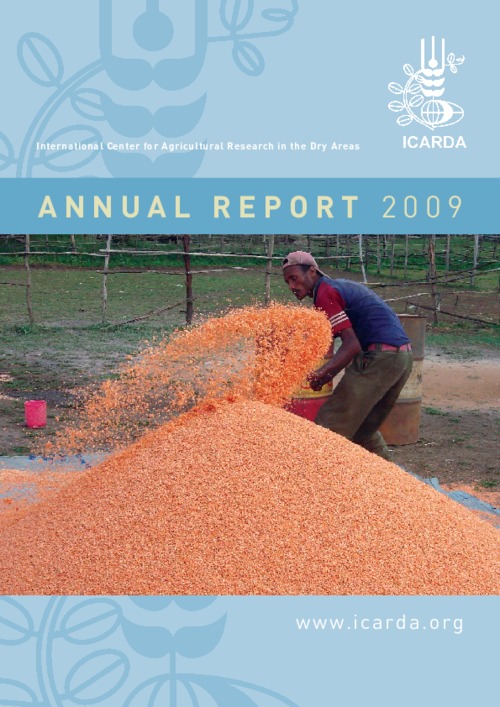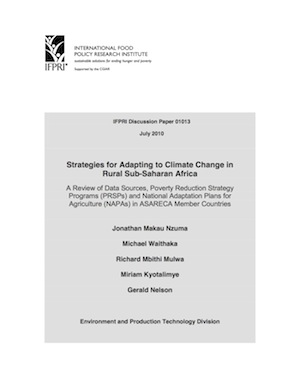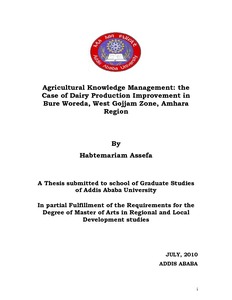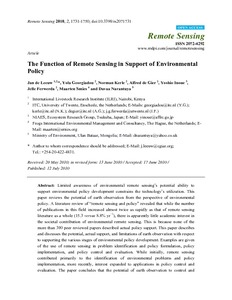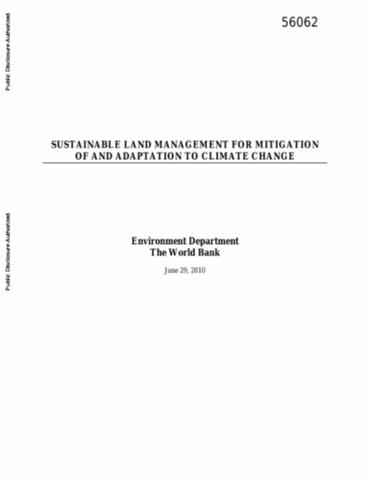ICARDA Annual Report 2009
The dry areas face severe challenges to sustainable development. The biggest challenges – food insecurity, water scarcity, land degradation, and climate change – are closely inter-related. The effects of climate change will be felt globally, but the dry areas will be particularly hard hit. Climate change will exacerbate water scarcity, rainfall variability, and the decline in the natural resource base, and thus could have a profound impact on food security.
Diagnostic study of live cattle and beef production and marketing: Constraints and opportunities for enhancing the system
Strategies for adapting to climate change in rural Sub-Saharan Africa
Given limited resources, adaptation strategies must target those populations most vulnerable to global change and equip those unable to adapt—generally the poorest—with the tools and incentives that will enable them to do so. ASARECA has recently carried out a study to enhance the understanding of climate change in the 10 ASARECA member countries. This report profiles the available climate change–related datasets and their accessibility and procurement details in the 10 ASARECA member countries.
Putting Pastoralists on the Policy Agenda: Land Alienation in Southern Ethiopia
Includes land alienation in the case study sites; impacts of land alienation; coping strategies; conclusions and policy recommendations. Found that livestock numbers are declining dramatically in the area, land degradation is increasing, people are becoming more vulnerable to drought and famine, and resource-based conflicts are increasing in severity. The traditional pastoralist way of life is increasingly making way for sedentary farming and enclosed private grazing land.
Agricultural knowledge management: Case of dairy production improvement Bure Woreda, West Gojjam Zone, Amhara Region
The government of Ethiopia gives great attention to agriculture and rural development for the country’s economy development. Dairy development is one of the components of agricultural development. To improve dairy production in certain locality, dairy producers should able to access and use appropriate knowledge for the particular problem at the right time. This research was conducted to assess agricultural knowledge management system and its challenges and opportunities of knowledge management processes in Bure district.
CARE Ethiopia Pastoral Livelihoods Programs in Oromia Region
The function of remote sensing in support of environmental policy
Limited awareness of environmental remote sensing’s potential ability to support environmental policy development constrains the technology’s utilization. This paper reviews the potential of earth observation from the perspective of environmental policy. A literature review of “remote sensing and policy” revealed that while the number of publications in this field increased almost twice as rapidly as that of remote sensing literature as a whole (15.3 versus 8.8% yr?1), there is apparently little academic interest in the societal contribution of environmental remote sensing.
Pasture in Gorno-Badakhshan, Tajikistan: Common Resource or Private Property
This paper looks at how recent economic and legal changes have affected pasture management and property rights in Tajikistan. Firstly, current trends in livestock numbers and mobility are compared with those of the Soviet period. Secondly, the impact of current land legislation is investigated using 2007 field data from two sites in the Gorno-Badakhshan region of the country. We describe the extent to which pasture at these sites is under private, community or state control and discuss the implications for sustainable management of this resource.
Climate change and gender: what role for agricultural research among smallholder farmers in Africa?
This study was commissioned to provide an understanding of the complex impacts climate change will likely have on existing gender and social inequalities.
Sustainable Land Management for Mitigation of and Adaptation to Climate Change
The climate change (CC) caused by increase in atmospheric concentration of CO2 and other Greenhouse Gases (GHGs), can be addressed through adaptation and mitigation strategies. Adaptation consists of strategies which minimize vulnerability to CC. The objective is to increase resilience of the ecosystems and communities through adoption of specific sustainable land management (SLM) techniques that have adaptive benefits. On the other hand, the goal of mitigation strategies is to enhance soil and vegetation (land) sinks for absorbing atmospheric CO2 and to minimize net emissions.


